Three
“DOELGER’S GREATEST ACHIEVEMENT”
In October 1952, Henry Doelger’s Westlake was hailed in the San Francisco News as his “Greatest Achievement.” A six-column photograph of Westlake dominated a full-page spread in the newspaper, flanked by columns of print on both sides. The photograph was a comprehensive aerial view that included the shopping center, construction of a housing unit near Lake Merced Boulevard, Westlake Elementary School, a 10-acre playground in construction, and various nearby recreation areas.
The feature noted, “Construction began at Westlake little more than three years ago. It now boasts more than 2000 completed and occupied homes, housing more than 7500 persons.... There is no end in sight for this progress, at least not until Doelger and his associates complete development of their entire 1200 acres.”
According to the News, “500 more homes are under construction and work will begin on construction of 2500 more homes in a new tract in approximately eight months. The two and three-bedroom homes, built from sixteen different floor plans but basically alike inside, are distinguished by their exteriors. Doelger utilizes 320 varied exteriors in Westlake, no two are alike in the same block. Also under construction are 128 new Country Club apartment units which will bring the total number to 750.”
The story concluded, “When Doelger Homes completely develops Westlake, there will be more than 8000 homes in this district, housing an estimated 32,000 persons.”
While home construction continued, much attention was given to expansion of the Westlake Town and Country Shopping Center, which had opened about a year and a half earlier. It was considered to be the Bay Area’s most complete one-stop shopping center, and its 3,000-car parking area was thought to be the nation’s largest.
Westlake’s mall was to become a management- and merchant-sponsored community gathering place as well as a mecca for shoppers and strollers, with free entertainment ranging from fashion shows and celebrity appearances to ribbon-cuttings for new businesses, plus weekly prize drawings and abundant giveaways.
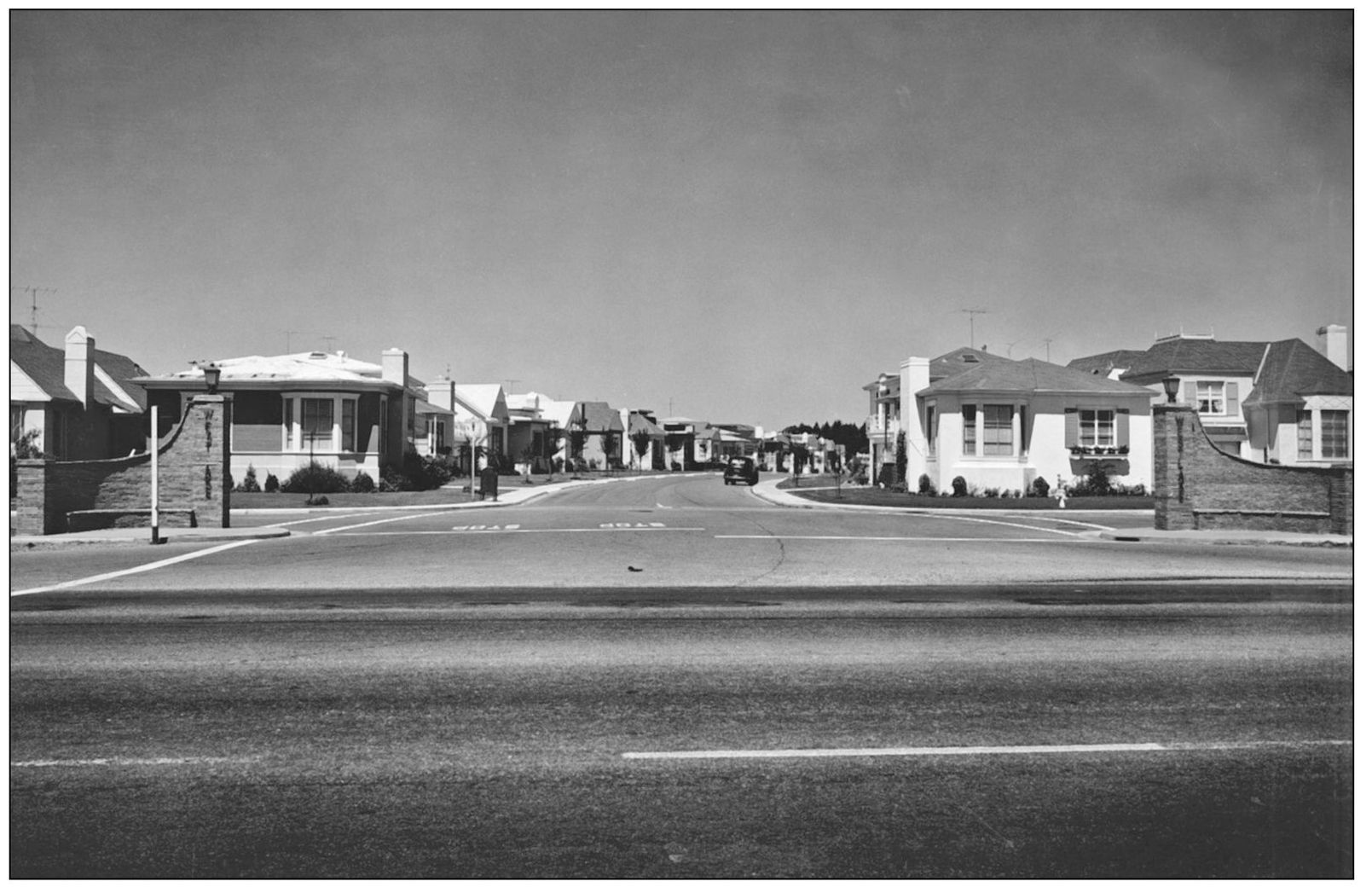
Twin brick portals identify the entrance to a gently curving Westlake thoroughfare, one of the first completed as Doelger’s “city within a city” took shape in the 1950s. Prospective purchasers were invited to “enjoy all the comforts of suburban living just twenty minutes from downtown San Francisco by car.”

Typical of Doelger’s “no two frontages alike in any one block” policy regarding the facades of Westlake homes is this row of split-level residences. Westlake building plans included 320 different frontages, making it uncommon to find two nearby homes that appear the same from the outside.

Two- and three-bedroom homes, built on the split-level design, were featured throughout Westlake. Elevated bedrooms were reached by a stairway located between the living room and dining room. Fireplaces were primarily decorative. Entrance doors faced the interior stairway. “The flow of rooms in a Doelger home is emphasized here,” reported Practical Builder magazine.

Although Doelger homes were built from 16 different floor plans, they were basically alike inside. Each home had a two-car garage, full-tile bathrooms, and kitchens with electric garbage disposal units. Available at the Town and Country appliance store were Westinghouse and Universal refrigerators for approximately $249 and Tappan gas or electric ranges for $369. A model house, opened in 1950, sold in half an hour for $9,000.

Looking as pleased in this June 1952 photograph as any person with an enviable and remarkable record of achievement and financial success, entrepreneur Henry Doelger celebrates another milestone in his life. He had reached the age of 56.
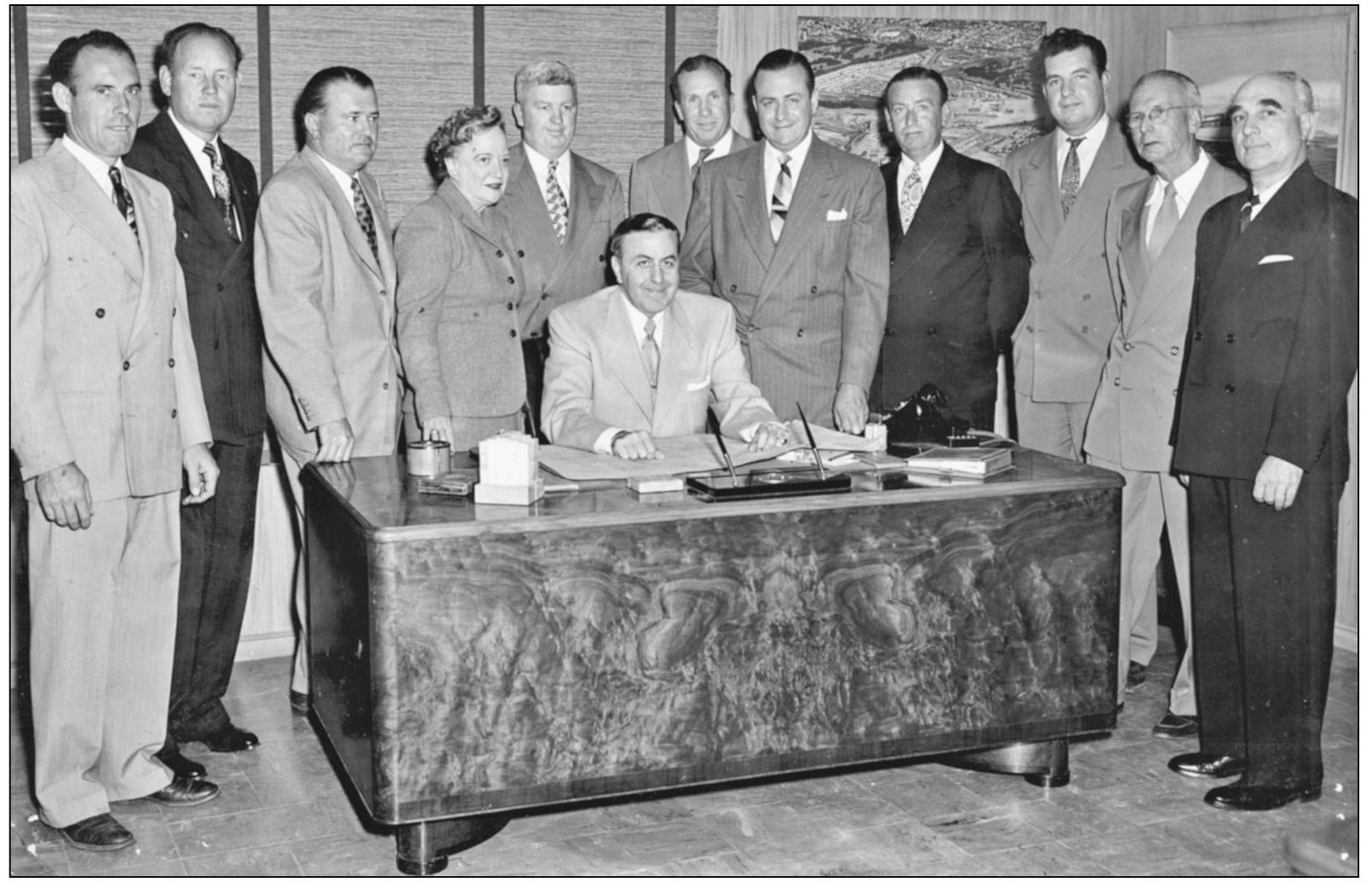
Westlake corporate staffers gathered around Henry Doelger’s elegant desk for this June 1952 photograph. Shown from left to right are Dale Williams; Carl Vedell; Bernardino Poncetta, production vice president; Alpha Porter, secretary-treasurer; Irwin Smith; Henry Doelger (seated); Harry Porter; John Doelger; Bill Hickey; Larry Neiry; J. Jacobsen, and U. R. “Jack” Kendree.

“Man of Distinction” was the accolade given to Henry Doelger in September 1952 as Lord Calvert custom-distilled whiskey launched a full-blown promotional campaign for outstanding business achievers. With the title came a bit of vicarious fame for Westlake and Daly City, as this jaunty nautical image of Doelger was used in advertisements across the country—on billboards, on specially labeled bottles of the product, and on table tents displayed in places selling potables.

Rusty Draper, one of California’s “fastest rising entertainers,” brought his talents to Westlake and attracted hundreds of fans anxious to see his free mid-week concert in October 1952. Draper’s mid-mall performance was televised in the Bay Area as part of ceremonies marking the opening of Westlake Town and Country Shopping Center’s unit four.

Standing room and 1,000 free seats were available on a first-come basis when Rusty Draper brought his guitar, songs, and Rusty Draper Show to Westlake in October 1952. Shown in the front row are, from left to right, Michael Doelger, Susan Doelger, Thelma Doelger, Joyce Doelger, Jane Doelger, Johnny Doelger, and Hartford Rapp Jr.

Robots and tramps mingled with skeletons and witches at the Westlake mall to take part in the shopping center’s 1952 Halloween costume parade and party.
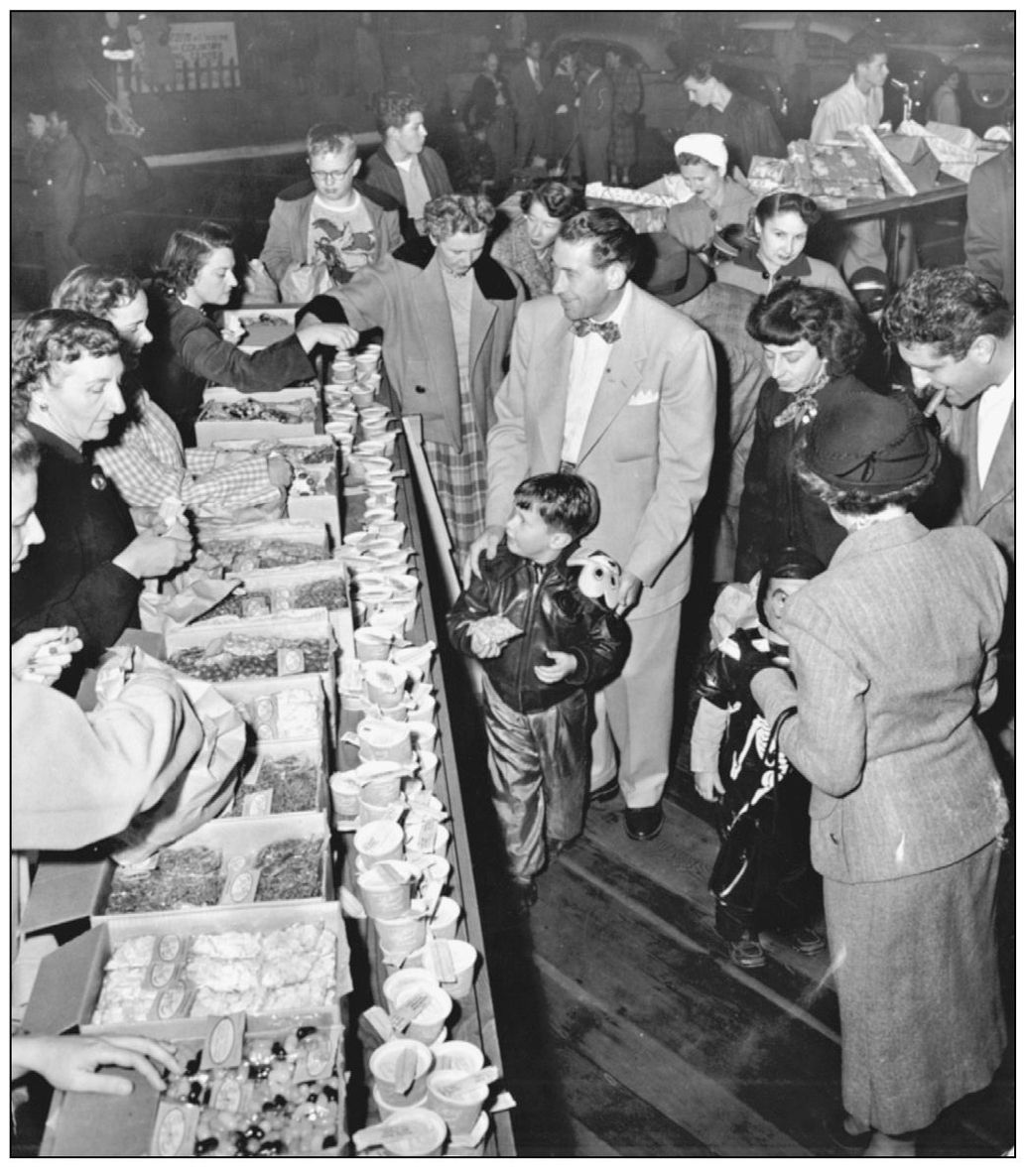
Halloween revelers lined up for bags of candy and tubs of ice cream when Westlake merchants hosted hundreds of costumed children and adults on an October evening in 1952. Wrapped surprises were awarded to lucky ticket holders.

Decked out in their Westlake Junior League baseball team uniforms and logo caps are local young athletes with their corporate sponsor, Henry Doelger, in this March 1953 photograph.

Top players have long been attracted to the several golf courses surrounding Westlake. Proximity to Lake Merced Golf and Country Club was promoted in this 1954 tournament program page. The Pacific Ocean is in the west at the top of the illustration. Junipero Serra Boulevard at the bottom is empty of cars. Even in sometimes unpredictable fog, champions have accepted the challenges of rivals and competed with satisfaction on local greens.

Roland Petrocchi, chief of the Daly City Police Department, and DCPD officer Les Bastido (center) met at Henry Doelger’s office in January 1954 to receive the Westlake Trophy, an impressive award recognizing the force’s intra-department shooting competitions. Atop the trophy is a figure taking aim at, perhaps, the chief’s hat.

Proof that Westlake was growing, and growing, is this line-up of happy faces as the “20,000th” receives a sizeable load of complimentary groceries. The name of the winning family has been lost, but among those congratulating the winners in this Lincoln’s birthday photograph in 1954 was Henry Doelger (third from left).
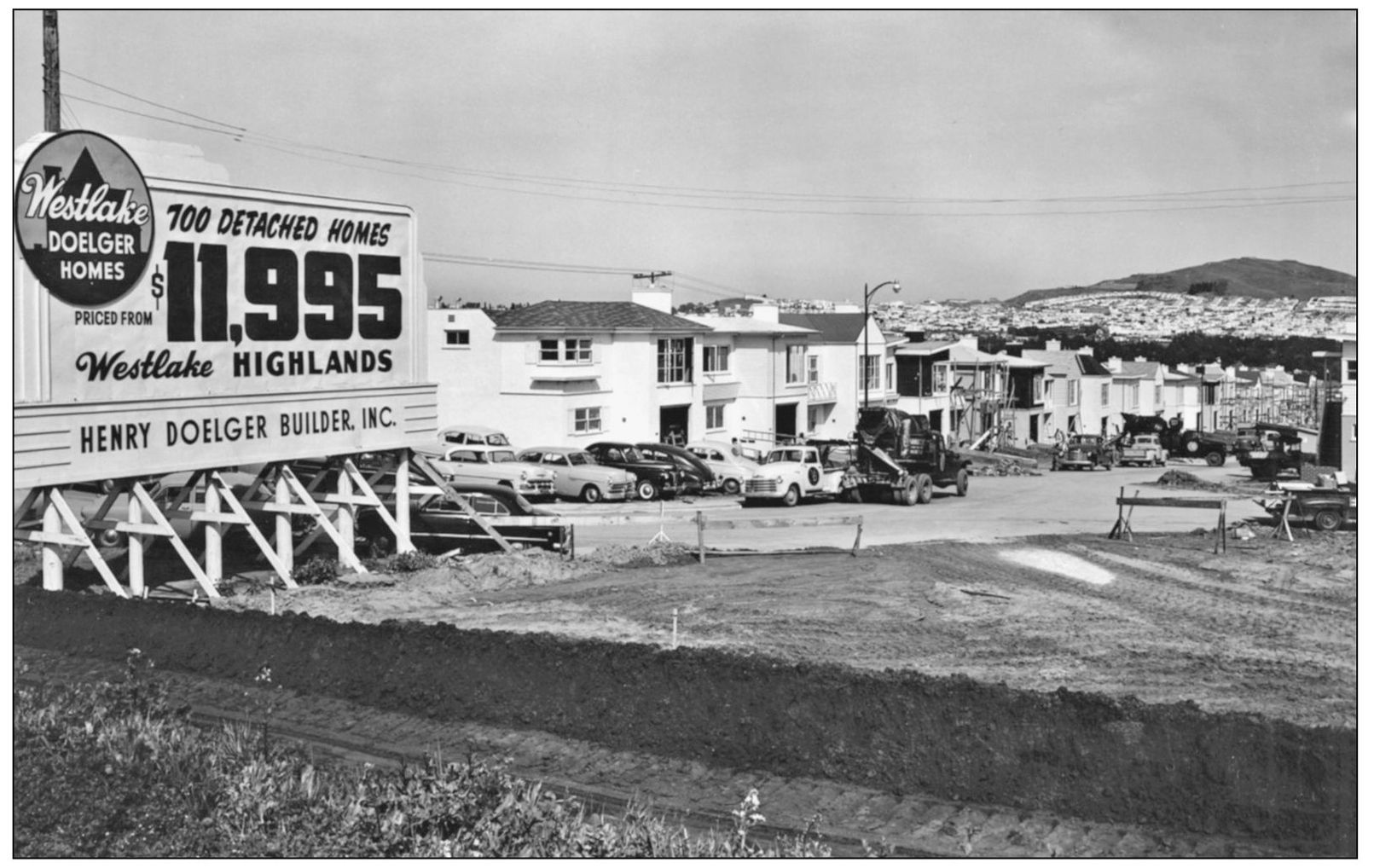
Two-level homes with full basements are seen in this April 1954 photograph of houses in various stages of development in Westlake Highlands. Frontages adhere to Doelger’s long-standing policy of unduplicated facades along rows of neighboring houses. In the distance are homes near Daly City’s Hillside neighborhood.

Lights were bright and automobiles cruised to locate parking spots in Westlake’s south parking area when this spectacular nighttime photograph was taken.

Officers of Westlake Post No. 535 of the American Legion and local dignitaries were present on May 14, 1956, for the presentation and dedication of American and organizational flags. Shown from left to right are Hal Blumenthal, commander of the post; Mrs. Cancilla, commander of the post auxiliary; Henry Doelger, donor of the flags; Judge Lewis Demattais; and Joe Madden, dedication officer.

Pretty little princesses perched on a Daly City Fire Department vehicle when a crown of flowers was placed by a member of the Boy Scouts of America in this May 1954 photograph taken at Westlake mall. One of these young ladies might have been a future Miss California.

The 1954 opening of a Bank of America branch in Westlake Court brought officials of the world’s largest bank to Daly City. Shown from left to right are Romey Moretti, Bank of America senior vice president; Carl Wente, Bank of America president; Henry Doelger; D. J. Franco, manager of the Westlake Bank of America branch, and R. J. Barbieri, Bank of America vice president.
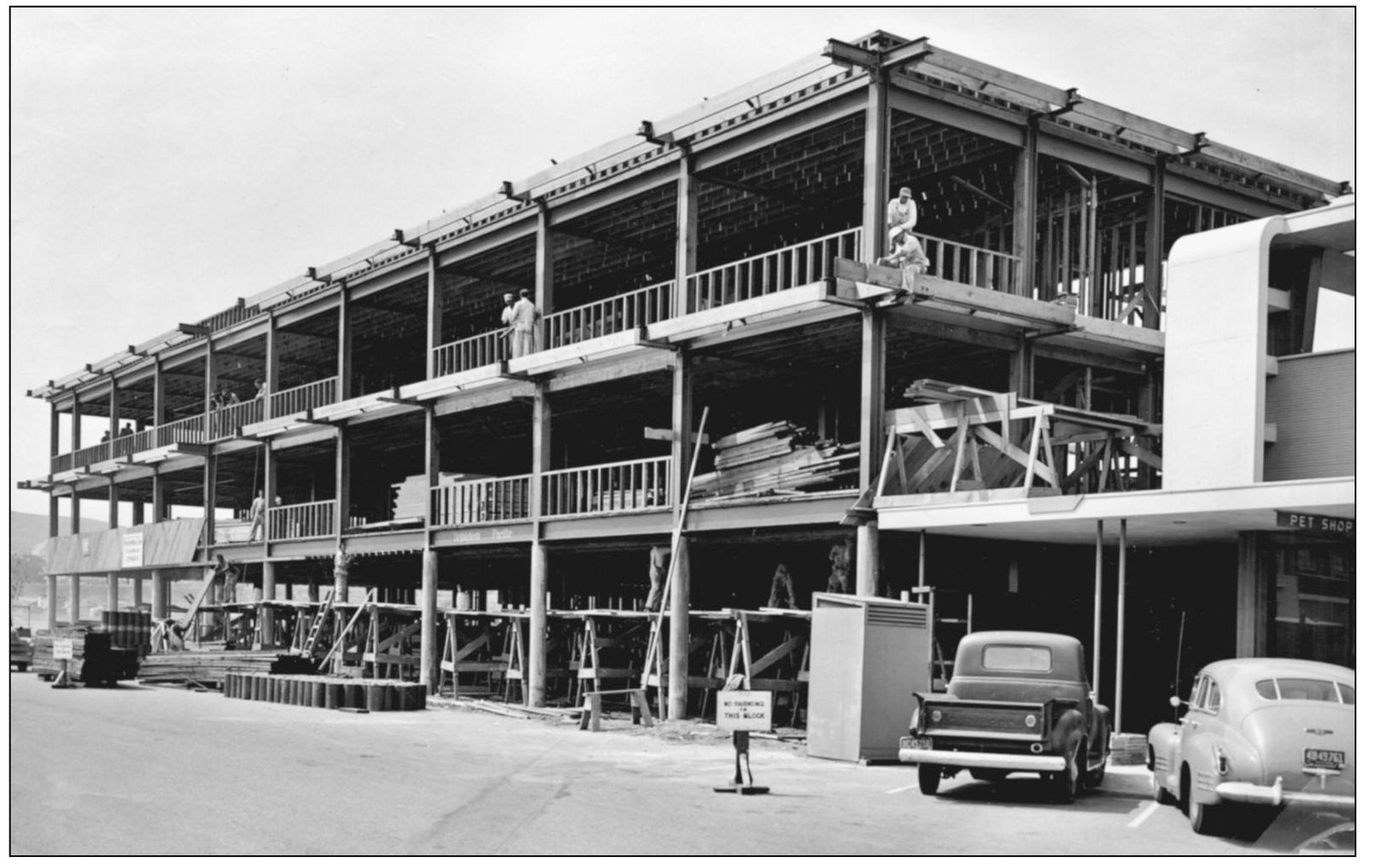
Medics were on the way as the Westlake Medical and Dental Building was being built in May 1954 on Park Plaza Drive. The multilevel facility would include a corner pharmacy and ground-level coffee shop. Elevators lifted patients and patrons to upper-level offices.
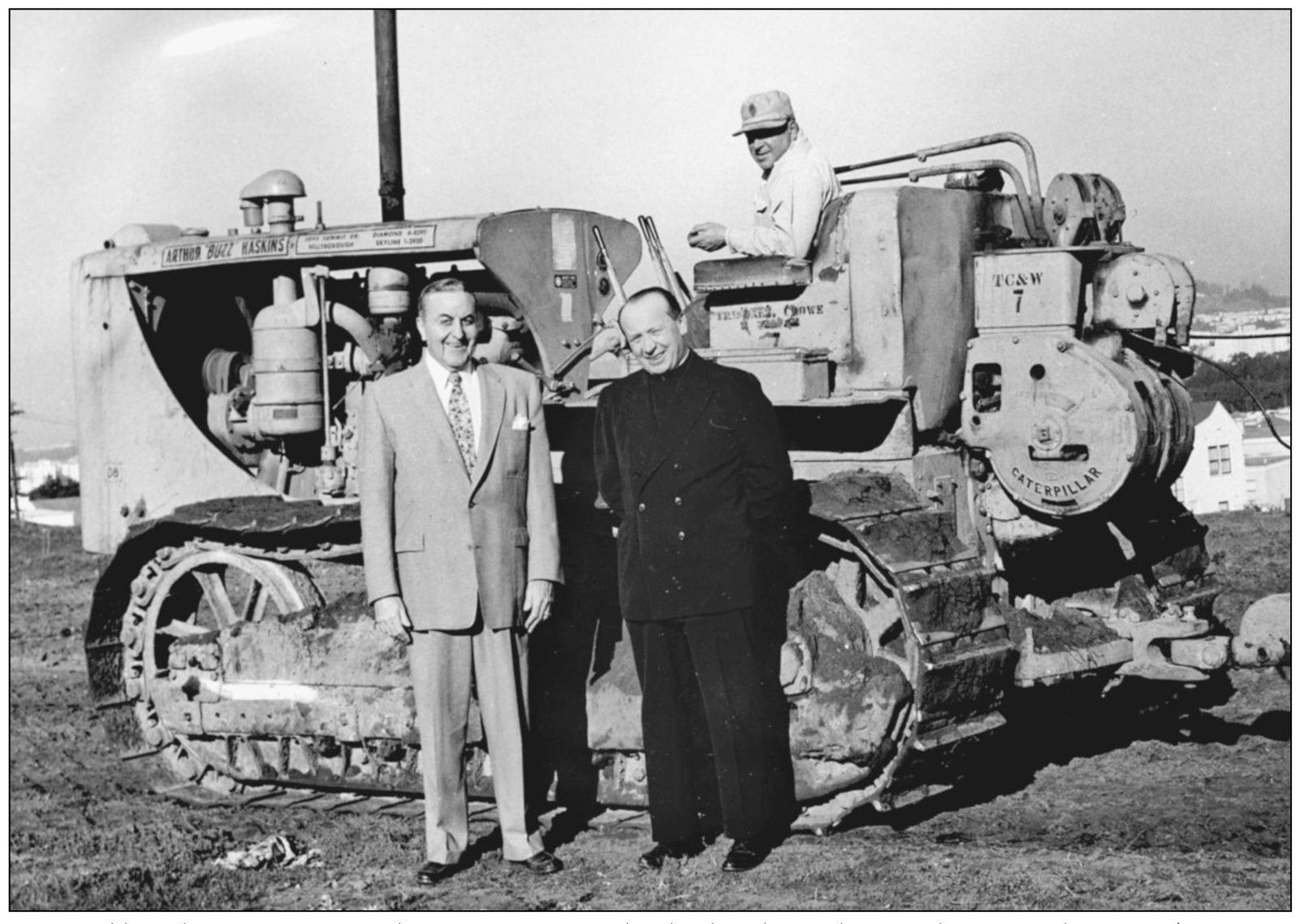
Ground breaking for Our Lady of Mercy parochial school on Elmwood Avenue began a $186,000 construction project in January 1955. Shown is Henry Doelger with Fr. Richard W. Power, pastor of OLM Church, while a patient Cat driver awaits instructions to begin work. The school was to be ready for 400 children the following September.

Utility vehicles of many kinds and capabilities were part of the Doelger construction fleet. In this January 1955 photograph, driver Roland Jeppesen poses with “the boss.” The building entrepreneur’s casual jacket evidences his fondness for appropriate attire.
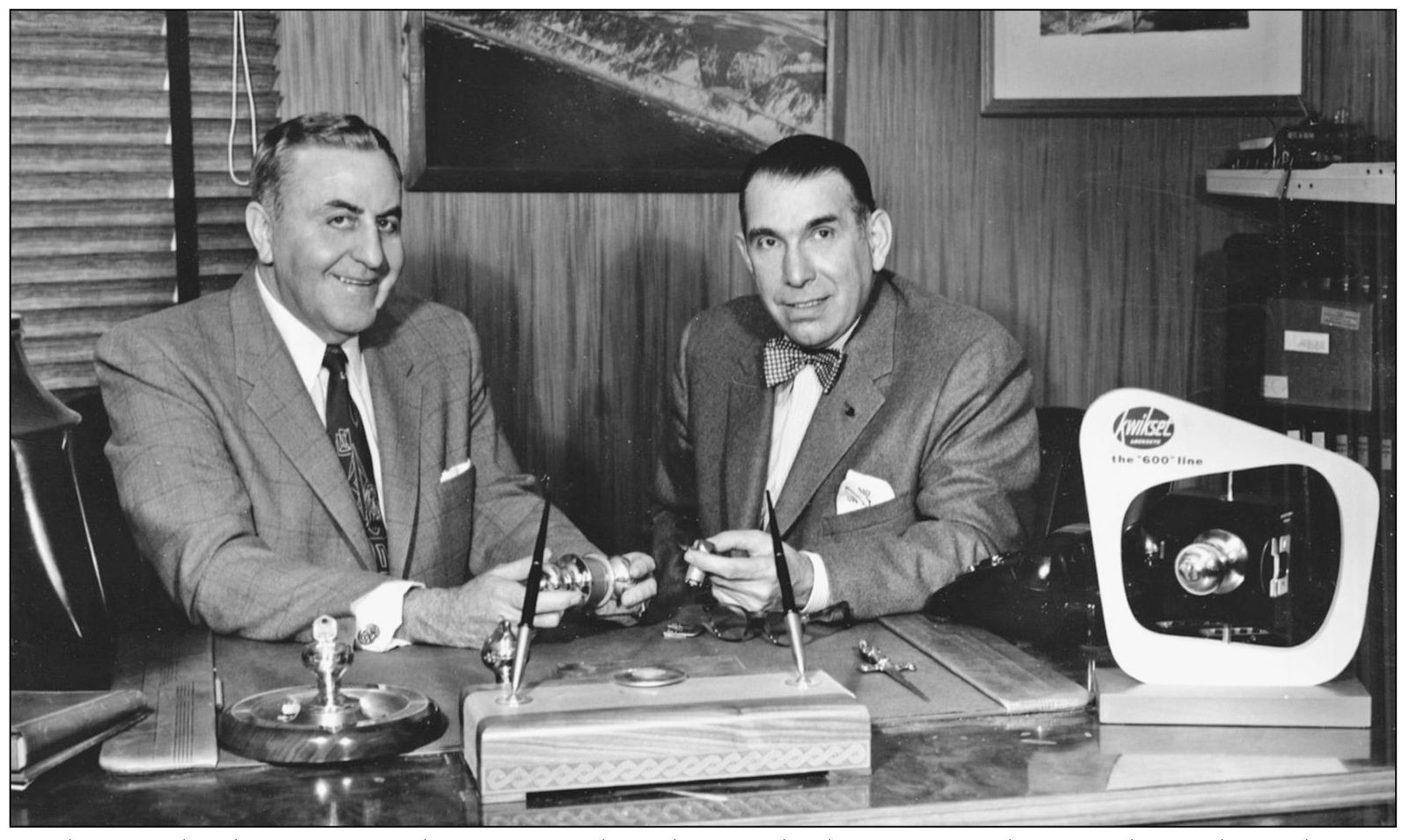
Architect Lloyd Gartner and Henry Doelger discuss the latest in Kwikset Locks in this February 1955 photograph. Gartner described his role as chief designer of all units of the Westlake Town and Country Shopping Center as his “most interesting work to date.” While Doelger homes were different on the outside but similar on the inside, Gartner reversed the procedure to make each business facility appear distinctive inside but with similar frontages.
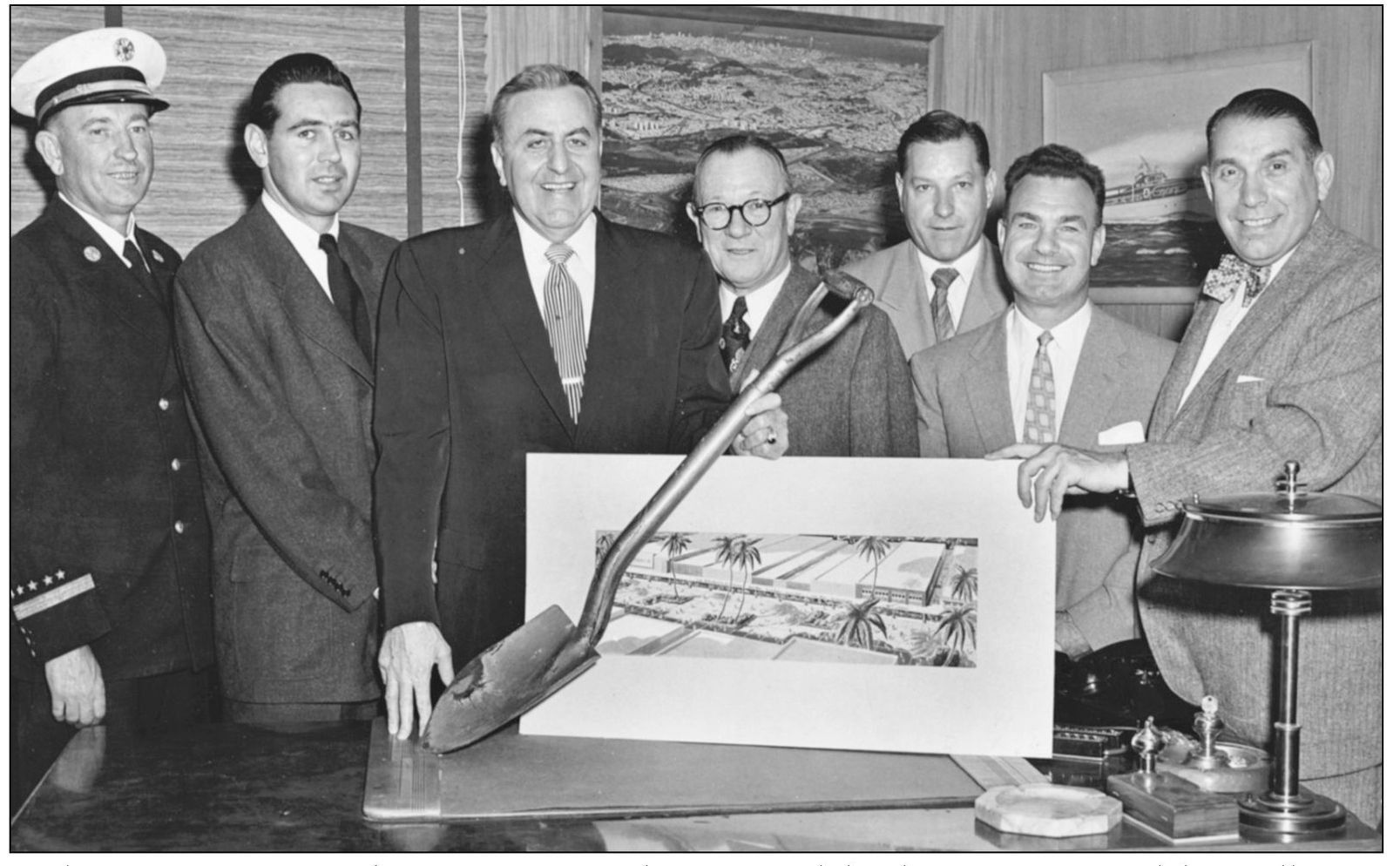
Backing an artist’s rendering of proposed stores and landscaping of Westlake mall were participants at ground-breaking ceremonies in April 1955. Shown from left to right are Daly City Fire Department chief Elmer Kennedy, Hartford Rapp Jr., Henry Doelger, George Roberts, Daly City councilman Del Wilson, Daly City mayor Joseph Verducci, and mall architect Lloyd Gartner.